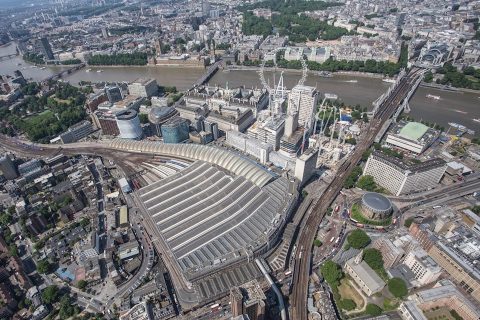HS2 Thame Valley Viaduct arriving in sections

The HS2 high-speed rail project is littered with superlatives. Among them is the Thame Valley Viaduct in Buckinghamshire, England. The low-lying bridge, which crosses a flood plain, is under construction, using a modular approach that’s a first for the UK. It’s just passed the halfway point, and the infrastructure team is somewhat excited.
The Thame Valley Viaduct is taking shape. It may not be to everyone’s delight, but the structure is making headlines in engineering circles. The low-lying bridge, which crosses a flood plain, will carry high-speed trains between London and Birmingham. The speed of construction is put down to a modular technique pioneered in Spain but put to vast use in the Buckinghamshire countryside.
One of the longest on the HS2 project
Trains on HS2, Britain’s high-speed rail project, may still be several years away from running. However, the infrastructure build is already running at full speed. Among a long list of individually immense civil engineering projects, the Thame Valley Viaduct has now passed the halfway point, with 44 out of 72 beams in position.
The viaduct near Aylesbury is one of the longest on the high-speed rail project. It is a first for the UK. Much of the structure is being prefabricated off-site. Instead of using a more traditional approach, with multiple narrower beams for each span, the design team opted for a simple structural solution with just two larger hollow 20m or 25m U-shaped beams per span.
Applause and also displeasure
Almost all of the precast components are being manufactured almost 85 miles away (136km), at a factory on the Isle of Grain, in Kent. However, while almost all of the construction project is supported by rail, the position of the viaduct, which is on a brand new alignment, and the size of the components, have necessitated road transport to the construction site. The use of the fabrication yard makes sense, in that it is also manufacturing other precast components for other parts of the line.
While applauded by the engineering community, the project is far from universally appreciated. One resident living near the viaduct project posted their discomfort on social media. “Hopefully, you’ll return as much of the [devastated] surrounding area back to how it was before you started. So many trees have been taken down in this area. Our roads are destroyed by the heavy construction traffic.”




